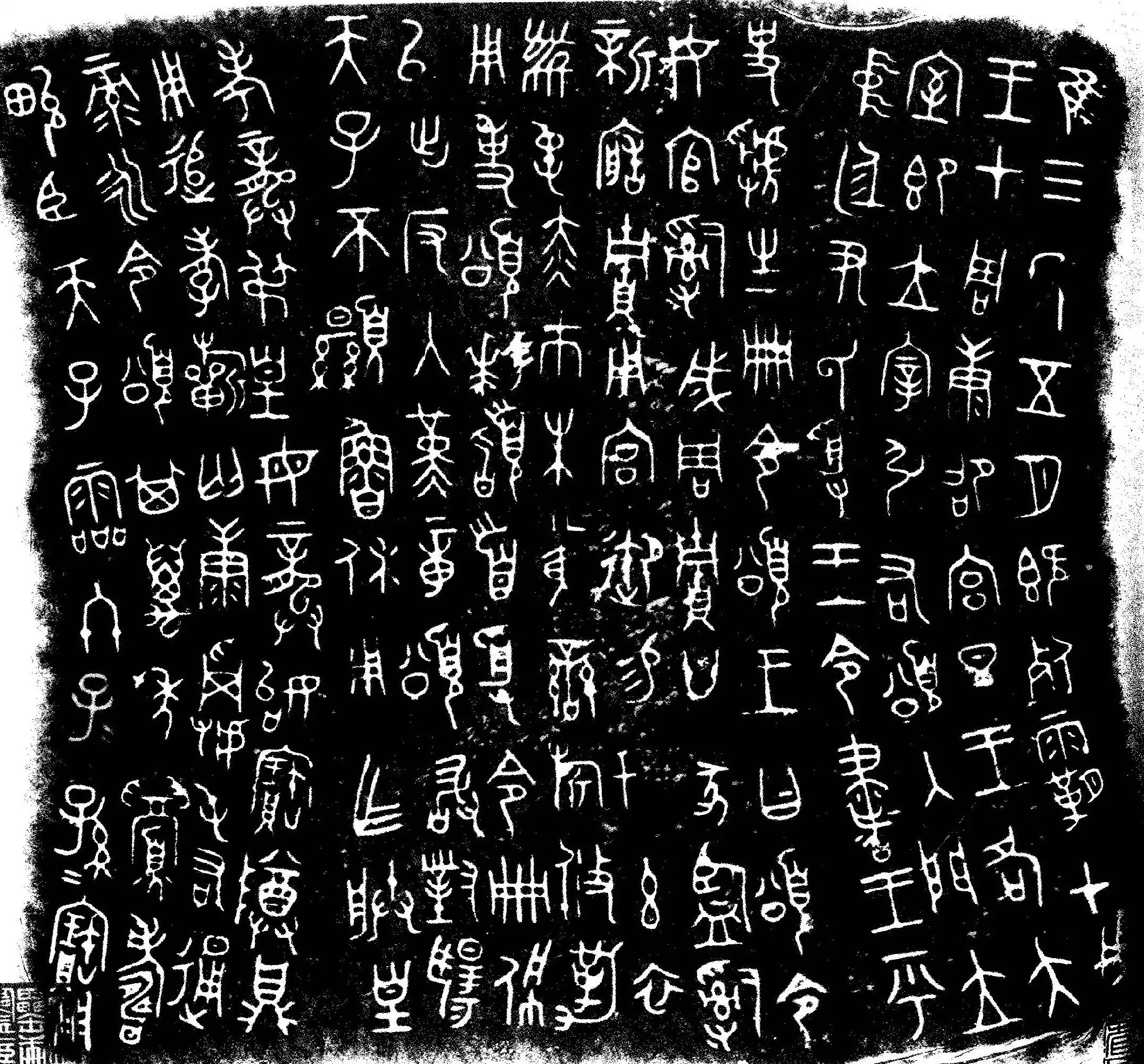| Large seal script | |
|---|---|
 | |
| Script type | |
Time period | Bronze Age China |
| Languages | Old Chinese |
| Related scripts | |
Parent systems | (Proto-writing)
|
Child systems | Small seal script Clerical script (lishu) Kaishu Traditional Chinese Simplified Chinese Kanji Kana Hanja Zhuyin Chu Nom Khitan script Jurchen script Tangut script |
The large seal script (Chinese: 大篆; pinyin: Dàzhuàn) is a traditional term referencing written Chinese dating from before the Qin dynasty—now used either narrowly to the writing of the Western and early Eastern Zhou dynasty (c. 1046 – 403 BCE), or more broadly to also include the oracle bone script (c. 1250–1000 BCE). The term deliberately contrasts the Small seal script, the official script standardized throughout China during the Qin dynasty, often called merely 'seal script'. Due to the term's lack of precision, scholars often prefer more specific references regarding the provenance of whichever written samples are being discussed.
During the Han dynasty (202 BCE – 220 CE), when clerical script became the popular form of writing, the small seal script was relegated to limited, formal usage, such as on signet seals and for the titles of stelae (inscribed stone memorial tablets which were popular at the time), and as such the earlier Qin dynasty script began to be referred to as 'seal script'. At that time, there remained knowledge of even older, often more complex glyphs dating to the middle-to-late Zhou dynasty, directly ancestral to the Qin forms—which resembled the Qin forms in their rounded style, as opposed to the rectilinear clerical script style prominent during the Han.[1] As a result, the 'large' and 'small' terms emerged to refer to the respective scripts.
It is only more recently that 'large seal script' has been extended to refer to Western Zhou forms, or even oracle bone script, of which people living during the Han were unaware. 'Large seal script' is sometimes traditionally identified with a group of characters from the Shizhoupian (c. 800 BCE), preserved by their inclusion in turn within the Han dynasty lexicon known as the Shuowen Jiezi. Xu Shen, the latter text's author, included the variants differing from the structures of small seal script, and labelled the examples as zhòuwén (籀文), referring to the name of the original book, not the name of the dynasty or of a script
See also
References
- Chén Zhāoróng (陳昭容) Research on the Qín (Ch'in) Lineage of Writing: An Examination from the Perspective of the History of Chinese Writing (秦系文字研究 ﹕从漢字史的角度考察) (2003). Academia Sinica, Institute of History and Philology Monograph (中央研究院歷史語言研究所專刊). ISBN 957-671-995-X. (in Chinese)
- Qiu Xigui Chinese Writing (2000). Translation of 文字學概要 by Gilbert L. Mattos and Jerry Norman. Early China Special Monograph Series No. 4. Berkeley: The Society for the Study of Early China and the Institute of East Asian Studies, University of California, Berkeley. ISBN 1-55729-071-7.